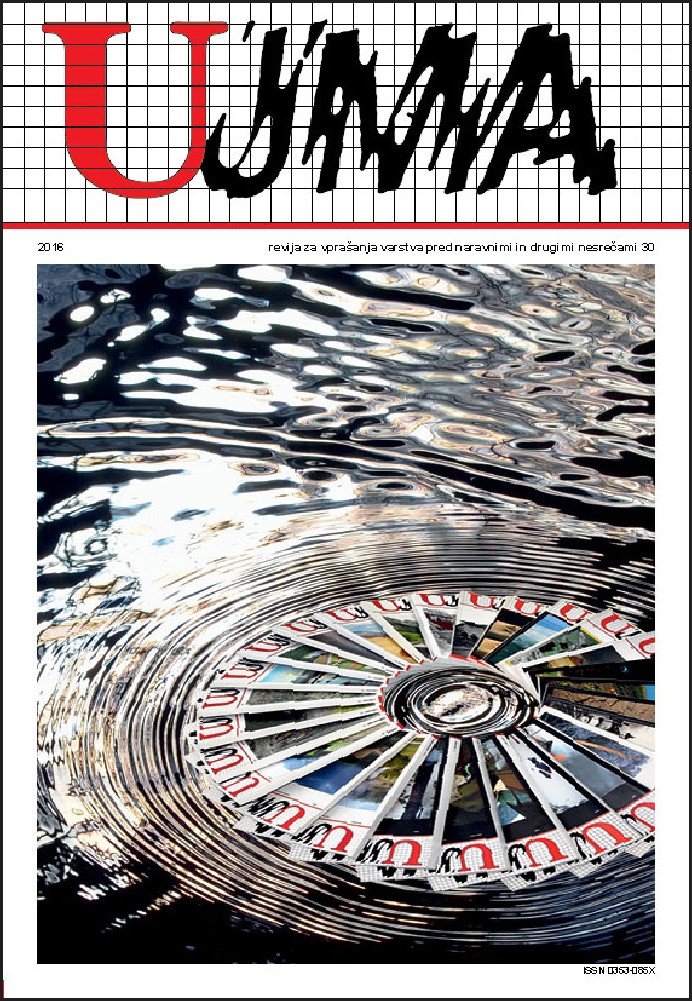USE OF SOCIAL NETWORKS IN DISASTERS
Abstract
Social networks are gaining in importance at all stages of the comprehensive emergency management since they reach a growing proportion of the population and are useful, accessible and responsive. Their impact is most evident in responses to disasters and other incidents such as terrorist attacks. Social networks enable individuals and social groups to cooperate, help each other, and exchange information outside the framework of traditional institutions and organisations. In addition, they facilitate two-way communication between civil society and the authorities, including the emergency services. Both sides can benefit from this communication through the development of situational awareness, achieved through gathering information in relation to conditions on the ground, resources for the mitigation of the consequences, activities already carried out, people’s attitudes, and the general atmosphere. The purpose of the ATHENA Research Project is to identify the possibilities for raising the level of social network use when responding to disasters. The ATHENA Research Project, with its partners from Slovenia, is funded by the Seventh Framework Programme of the EU.
References
Abbasi, M., Kumar, S., Augusto, J., Filho, A. & Liu, H., 2012. Lessons Learned in Using Social Media for Disaster Relief - ASU Crisis Response Game. S. J. Yang, A. M. Greenberg, & M. Endsley, eds. Social Computing, Behavioral - Cultural Modeling and Prediction. Lecture Notes in Computer Science. Berlin, Heidelberg: Springer Berlin Heidelberg. 282–289.
Alexander, David E., 2014. Social Media in Disaster Risk Reduction and Crisis Management. Science and Engeneering Ethics, 20: 717–733.
Andrews, Simon, Simenon Yates, Babak Akhgar in David Fortune, 2013. The ATHENA Project: Using Formal Concept Analysis to Facilitate Actions of Responders in a Crisis Situation. V: Babak Akhgar in Simeon Yates ur. Strategic Inteligence Management. Amsterdam: Elsevier.
Committee on Public Response to Alerts and Warnings Using Social Media, 2013. Public response to alerts and warnings using social media. Report of a workshop on current knowledge and resarch gaps. USA: The National Academies Press.
Domdouzis, K., Andrews, S., Gibson, H., Akhgar, B., Hirsh L., 2014. Serivce-Oriented design of a Command and Control Intelligence Dashbord for crisis managemnet. IEEE/ACM 7th International Conference on Utility and Cloud Computing: 702–706.
Dufty, Neil, 2016. Twitter turns ten: its use to date in disaster management. Australian Journal of Emergency Management 31 (2): 50–54.
Edwards, Charlie, 2009. Resilient Nation. London: Demos.
Gibson, H., Andrews, S., Domdouzis, K., Hirsh, L., Akhgar, B., 2014. Combining big social media data and FCA for crisis response. IEEE/ACM 7th International Conference on Utility and Cloud Computing: 690–695.
Gupta, Aditi, Hemank Lamba in Ponnurangam Kumaraguru, 2013. $1.00 per RT #BostonMarathon #PrayForBoston: Analyzing Fake Content on Twitter. Proceedings of the eCrime Research Summint. California, San Francisco.
Haworth, Billy, in Eleanor Bruce, 2015. Emerging technologies for risk reduction: assessing the potential use of social media and VGI for increasing community engagement. Australian Journal of Emergency Management, 30: 36–41.
Kaminska, Kate, in Bjorn Rutten, 2014. Social media in emergency management: Capability assessment. Ottawa Ontario Canada: Defence Research and Development Canada, Centre for Security Science.
Kaplan, Andreas, in Michael Haenlein, 2010. Users of the world, unite! The challenges and opportunities of Social Media. Bussiness Horizons 53: 59–68.
Kaplan, Andreas, in Michael Haenlein, 2012. Social media: back to the roots and back to the future. Journal of Systems and Information Technology 14(2): 101–104.
Kemp, Simon, in We Are Social, 2016. Digital in 2016.
Meier, P., 2012. Crisis Mapping in Action: How Open Source Software and Global Volunteer Networks Are Changing the World, One Map at a Time. Journal of Map & Geography Libraries, Vol 8, No. February 2015: 89–100.
Qurantelli, Enico Leone, 1992. The Importance of Thinking of Disasters as Social Phenomena. DRC preliminary paper 184. USA: Newark, Disaster Research Center University of Delaware.
Premrl, Klemen, 2016. Intervju z avtorjem. Ljubljana, 17. oktober 2016.
Scanlon, J., Helsloot, I., Groenendaal, J., 2014. Putting it all together: Integrating ordinary people into emergency response. International Journal of Mass Emergencies and Disasters, 32(1): 42–63.
Statistični urad Republike Slovenije, 2016. Dostop do interneta po tipu gospodinjstva.
Statistični urad Republike Slovenije, 2016. Dostop do interneta prek mobilnih naprav pri rednih uporabnikih interneta.
Statistični urad Republike Slovenije, 2016. Namen uporabe interneta pri rednih uporabnikih interneta, po starostnih razredih in spolu.
Statistični urad Republike Slovenije, 2016. Uporaba interneta prek mobilnih naprav, posamezniki 16–74 let.
Statistični urad Republike Slovenije, 2016. Uporabniki mobilnega omrežja.
Svete, Uroš, 2006. Uporaba informacijsko-komunikacijske tehnologije ob naravnih in drugih nesrečah: od napovedovanja in preprečevanja do obvladovanja posledic. Ujma 10: 219–223.
Valicon, 2016. Sporočilo za medije: Uporaba družbenih omrežij v Sloveniji v številkah.
Ziemke, J., 2012. Crisis Mapping: The Construction of a New Interdisciplinary Field? Journal of Map & Geography Libraries, Vol 8, No. February 2015: 101–117.
Downloads
Published
Issue
Section
License

This work is licensed under a Creative Commons Attribution-NonCommercial-NoDerivatives 4.0 International License.
The articles are made available to the public under Creative Commons Attribution-NonCommercial-NoDerivatives 4.0 International (CC BY-NC-ND 4.0).


